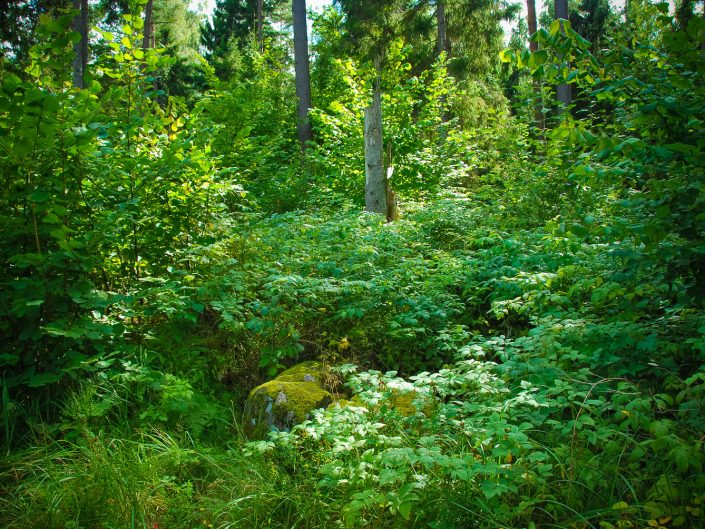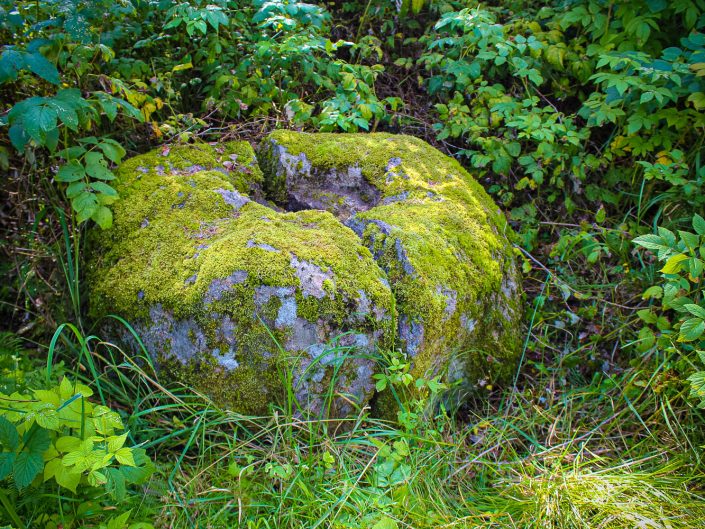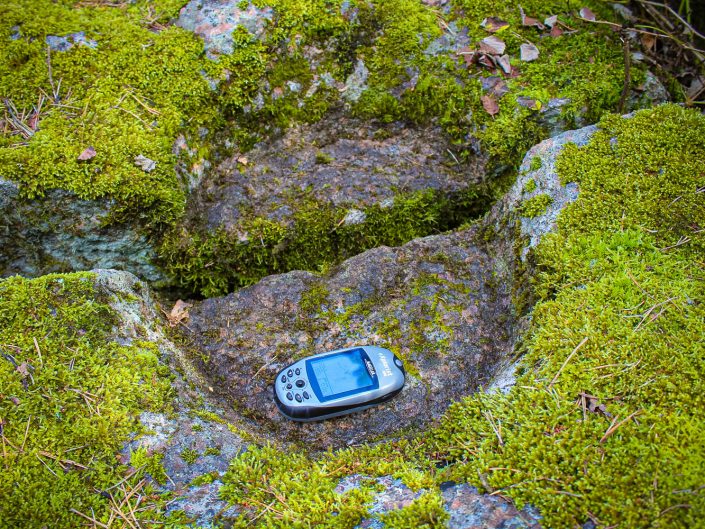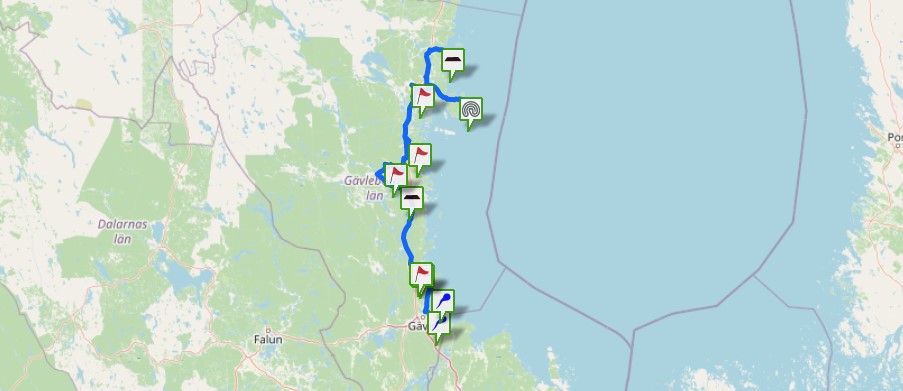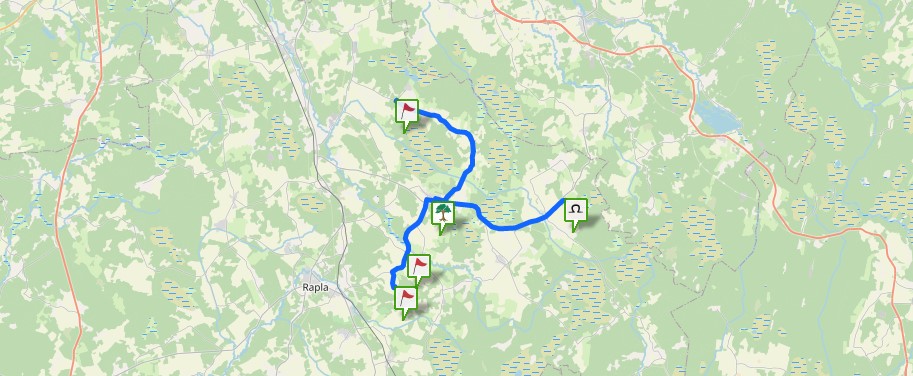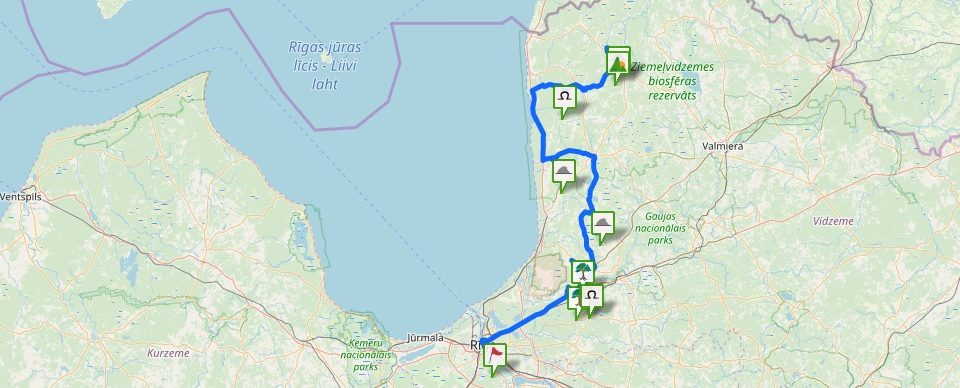An outstanding bowl-shaped stone which has suffered from damage. Its dimensions: length: 1.47 m, width 1.43 m, height 0.8 m, circumference 4.73 m. A typical bowl-shaped stone with a bowl-shaped surface and grooves on its sides. The depth of the bowl-shape hollow is 10–13 cm, at the S edge it is up to 16 cm, the diameter of the top ring edge is 41–44 cm, the diameter of the hollow on the bottom of the bowl is 34 cm. On the sides of the stone 15 side grooves can be detected: 13–40 cm long, 3–5 cm wide and 0.5–2 cm deep. Unfortunately, at the very beginning of the 20th century due to unknown reasons the stone was split. When splitting the stone a 39 cm deep drill was made with a diameter of 1.7 cm. The stone, however, was just split and left in its original place.
The hollow stone is picturesque and lies far from civilization, in the middle of the forest. There is no mention of it in the folklore as far as it is known. The hollow looks carved with metal tools most likely several hundreds years ago. The key version is that it was carved for some cult-related purposes practiced here. Some beliefs might have been related to it, maybe food was sacrificed on it or the water that had accumulated in the hollow was used.
It is usually called a sacrificial hill and this name has been widely used in various literature although there are no concrete evidences about sacrifices on this stone.
